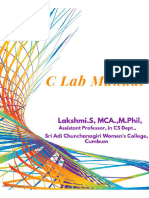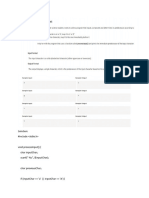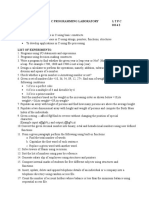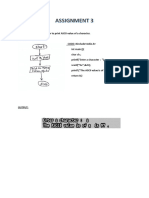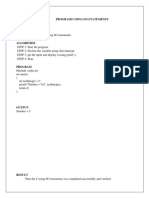0% found this document useful (0 votes)
7 views4 pagesAssignment 7 1
This document outlines a C program that checks if a number is an Armstrong number, Krishnamurthy number, or Perfect number using a switch-case structure. It includes an algorithm and source code for implementation, detailing the necessary steps and logic for each type of number check. The program demonstrates basic programming concepts such as loops and number manipulation.
Uploaded by
Arman KumarCopyright
© © All Rights Reserved
We take content rights seriously. If you suspect this is your content, claim it here.
Available Formats
Download as PDF, TXT or read online on Scribd
0% found this document useful (0 votes)
7 views4 pagesAssignment 7 1
This document outlines a C program that checks if a number is an Armstrong number, Krishnamurthy number, or Perfect number using a switch-case structure. It includes an algorithm and source code for implementation, detailing the necessary steps and logic for each type of number check. The program demonstrates basic programming concepts such as loops and number manipulation.
Uploaded by
Arman KumarCopyright
© © All Rights Reserved
We take content rights seriously. If you suspect this is your content, claim it here.
Available Formats
Download as PDF, TXT or read online on Scribd
/ 4







